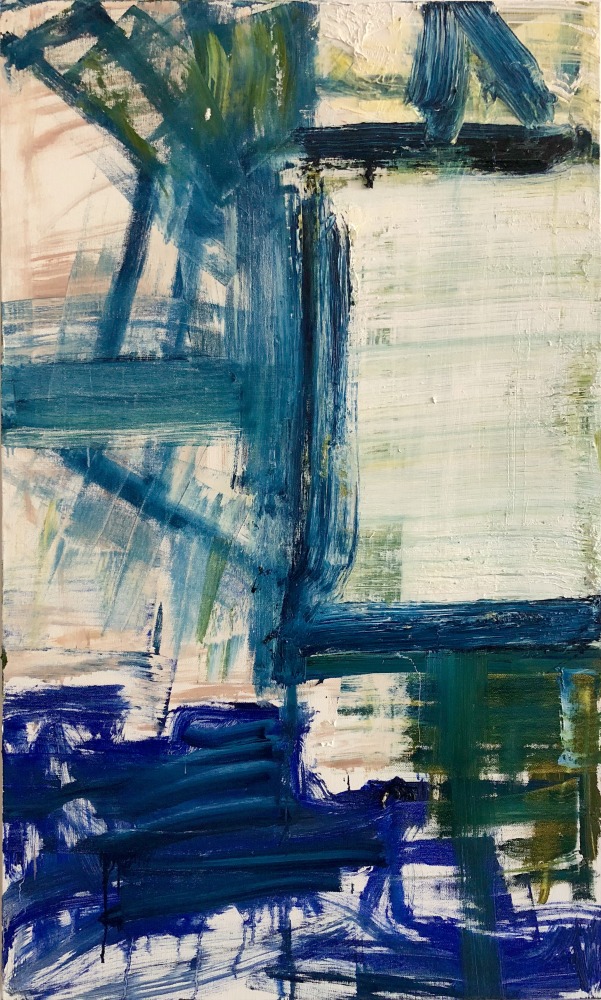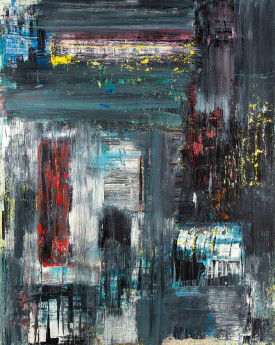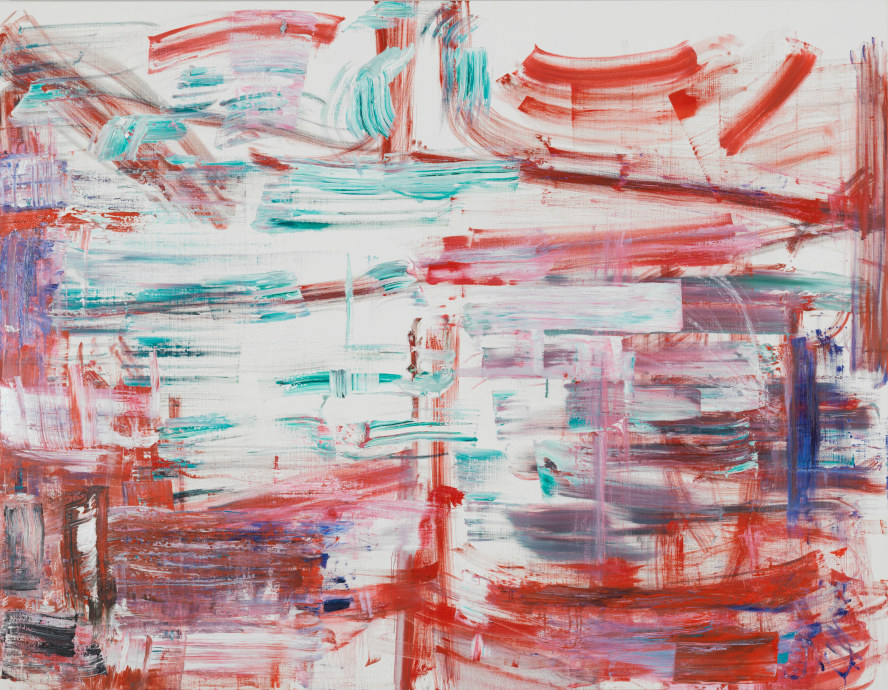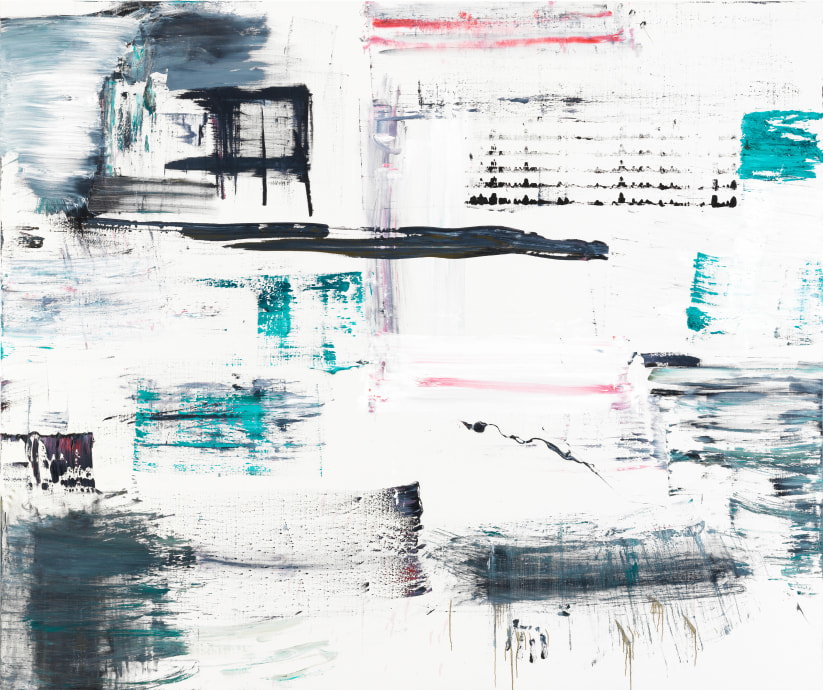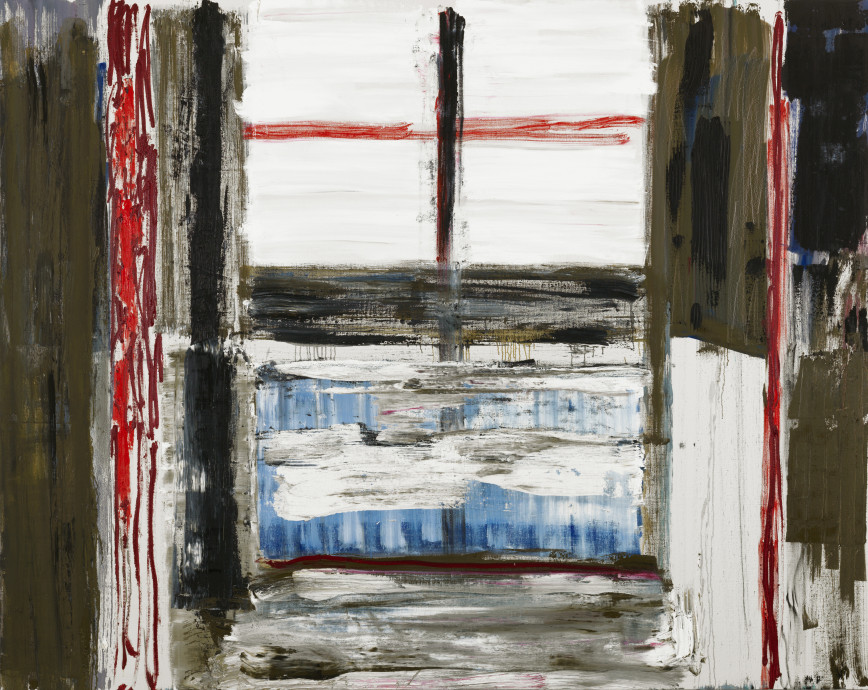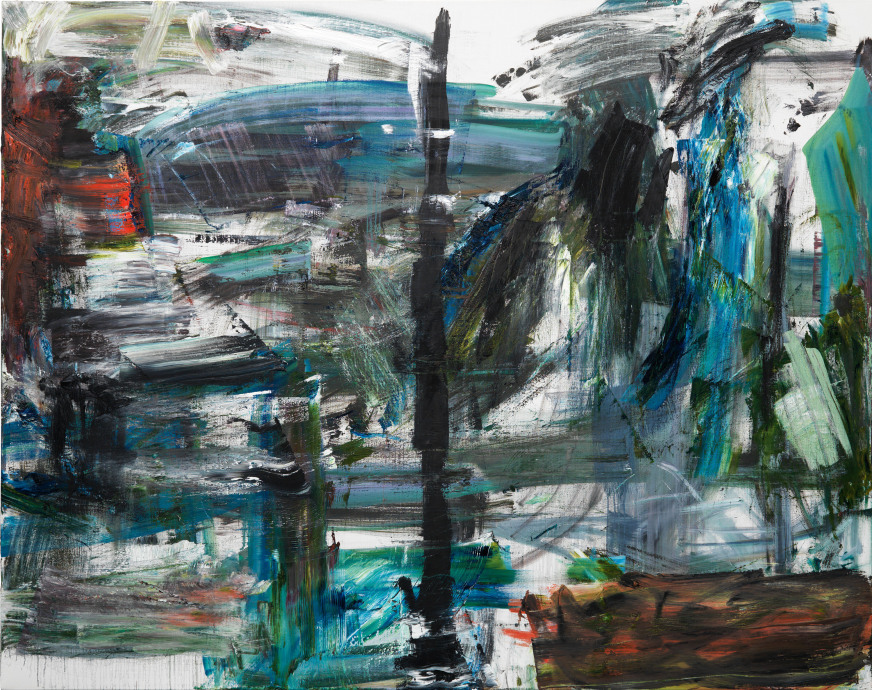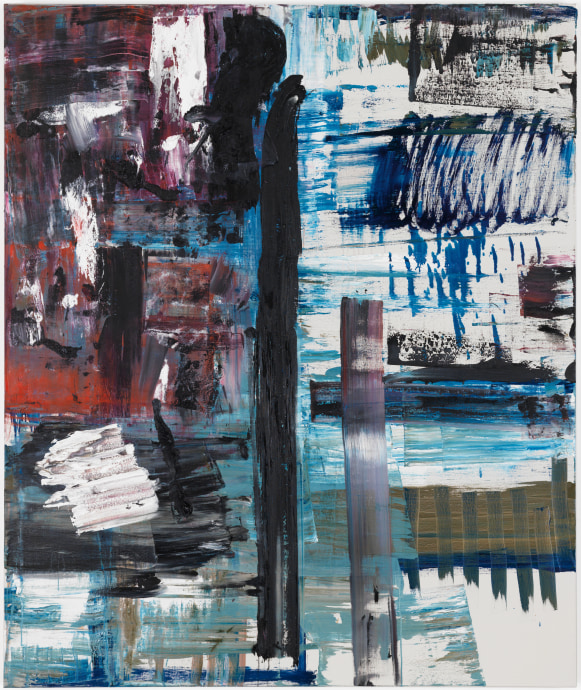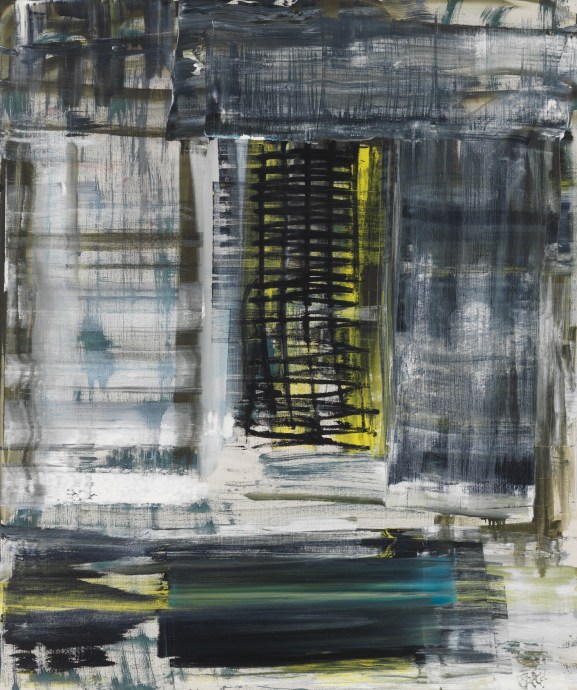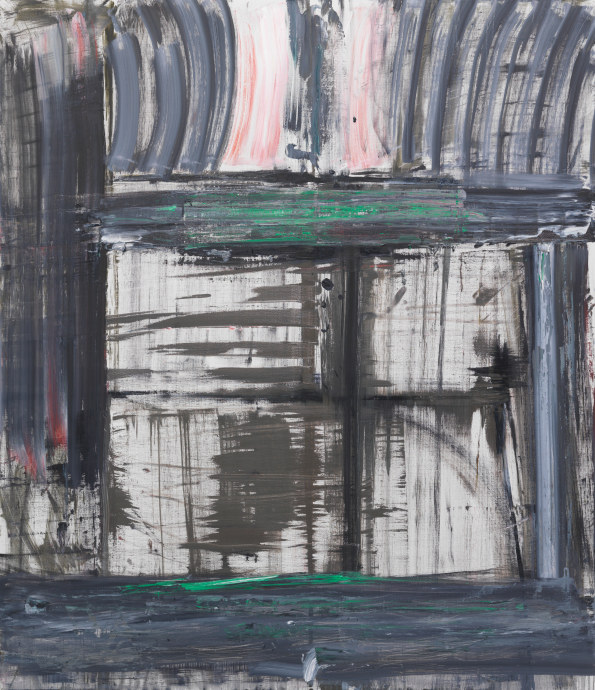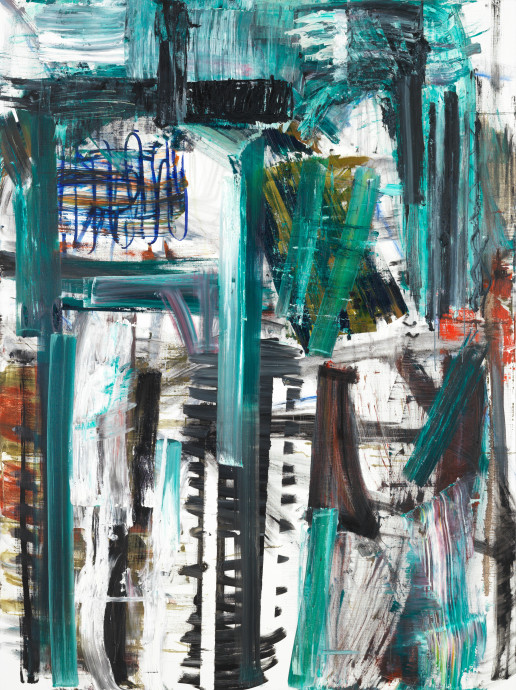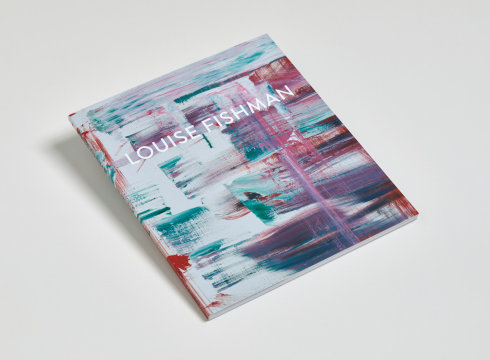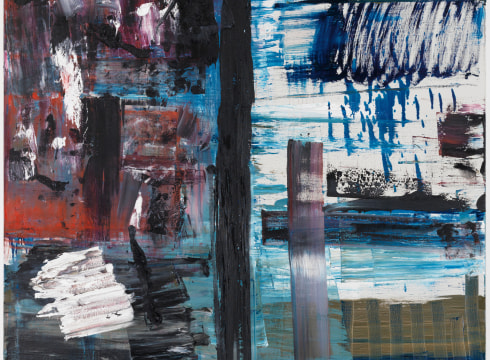
The works presented here are monumental in scale and represent Fishman’s most recent body of work. The athleticism of her work, the energy and intensity of her studio practice, is evident in the series. Her body’s relationship to the rectangle guides her footwork in front of the canvas, as she points to the physicality of painting and maintains a dynamism of spirit she says relates to her “identity as a Jew, as a woman, as a lesbian, as a lover of music, poetry, and nature in all her frailty.” (“Louise Fishman: Footwork in Front of the Canvas.” Interview by Elaine Sexton in Tupelo Quarterly, Voume 17, 2019)
Fishman’s decisive re-appropriation of abstraction, which was overtly masculinized by Abstract Expressionist painters like Jackson Pollock and Willem de Kooning, repositioned it for a different era and gender. Fishman’s longtime activism at the front lines of the feminist and queer movements and her serious investment in the history and language of painting combine in work that is in deep dialog with the medium’s history and unironically expressionistic.
Born in 1939 in Philadelphia, Fishman currently lives and works in New York City and maintains a studio in upstate New York. Fishman’s work is in the collections many public institutions, including the National Academy of Art and Design, NY; the Metropolitan Museum of Art, NY; the Art Institute of Chicago, Chicago, IL; the Carnegie Museum of Art, Pittsburg, PA; the High Museum of Art, Atlanta, GA; the Jewish Museum, NY; the Neuberger Museum of Art, Purchase, NY; the Krannert Art Museum, Champaign, IL; the Hood Museum of Art, Hanover, NH; and the Museum of Contemporary Art, San Diego, CA. She was the recipient of three National Endowment for the Arts grants, a New York Foundation for the Arts Fellowship, and a Guggenheim Fellowship, among others.
Widely shown for the past five decades, Fishman’s first group show was at the National Drawing and Print Exhibition at the Pennsylvania Academy of Fine Arts in 1961. Her first solo exhibit was at the Philadelphia Art Alliance in 1963. Fishman was included in three Whitney Biennials: 1973, 1987, and 2014 (the last biennial at the Breuer building). In 2016, the Neuberger Museum of Art organized the artist’s first retrospective, curated by Helaine Posner and accompanied by a monograph; the retrospective traveled to the Weatherspoon Art Museum, University of North Carolina at Greensboro in 2017. In Fishman’s hometown of Philadelphia, the Institute of Contemporary Art held a concurrent exhibition of her small-scale work, Paper Louise Tiny Fishman Rock, curated by Ingrid Schaffner.



